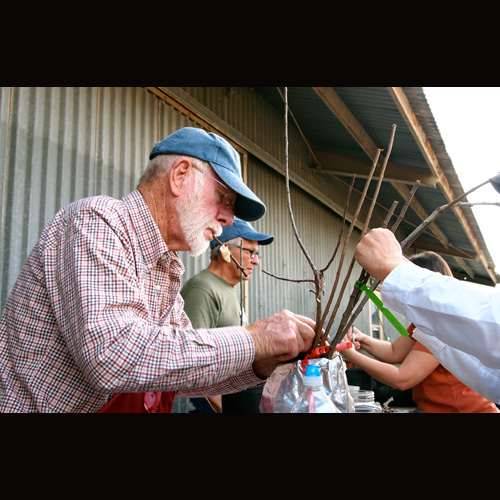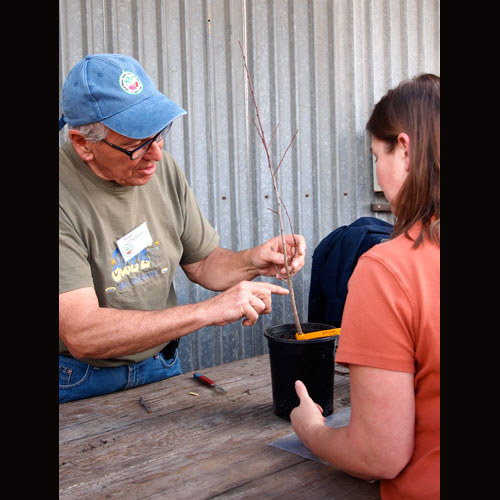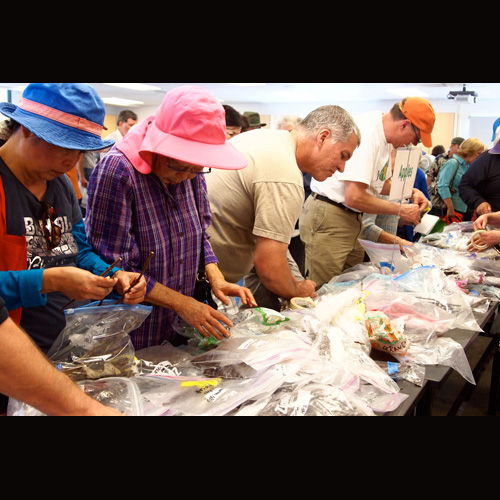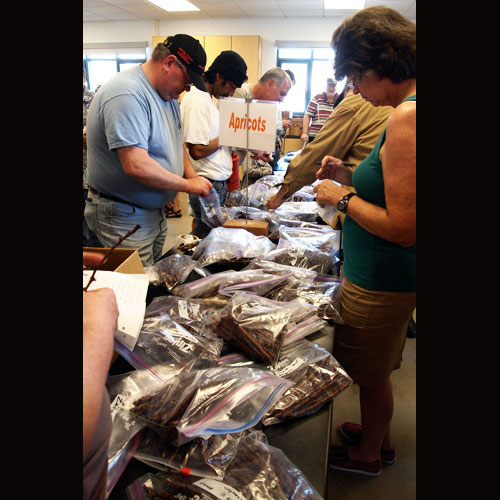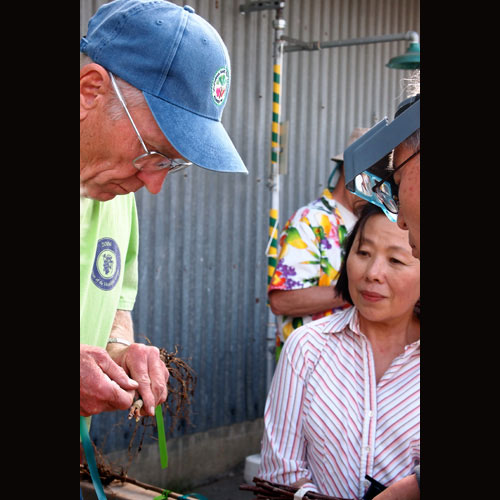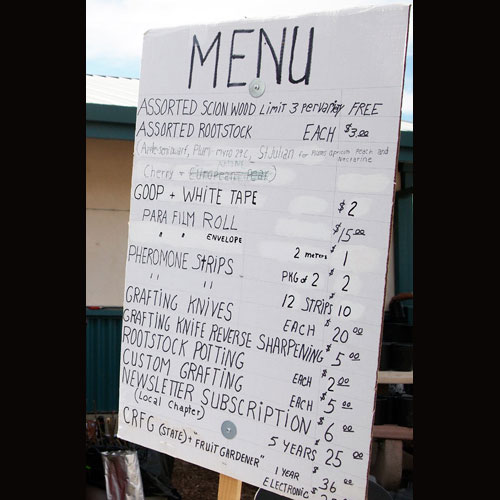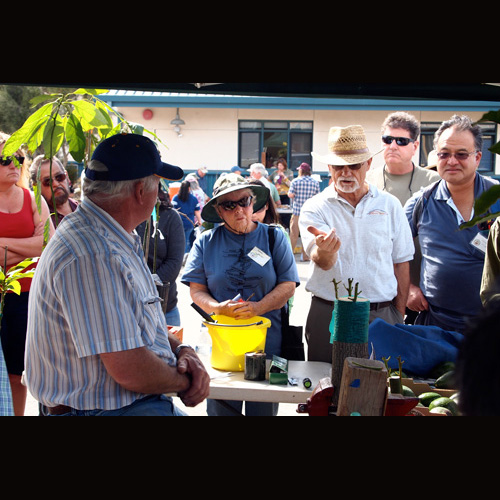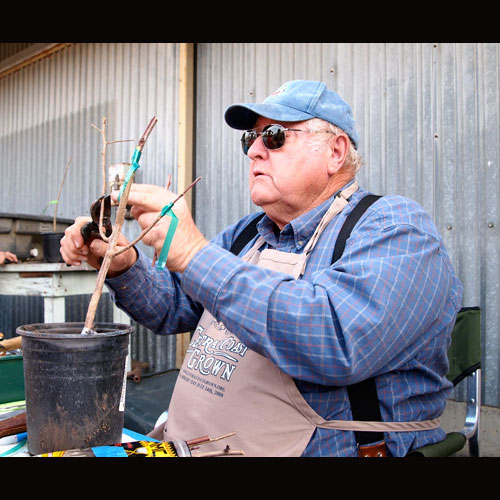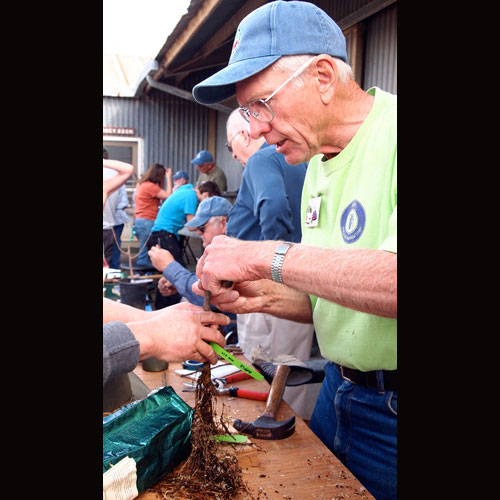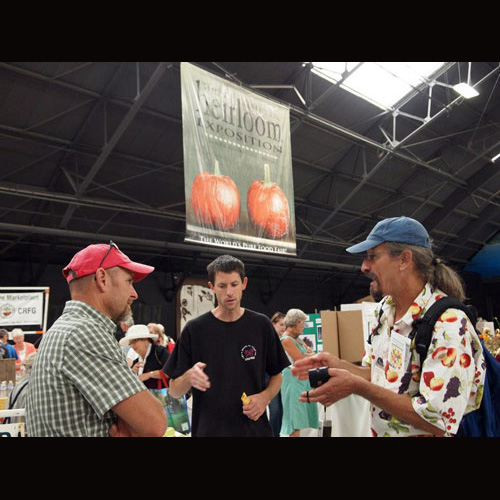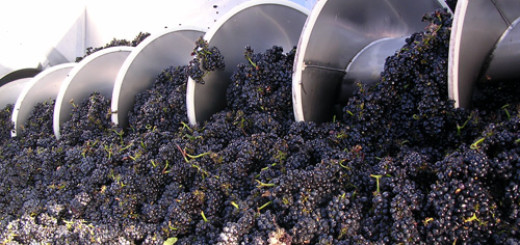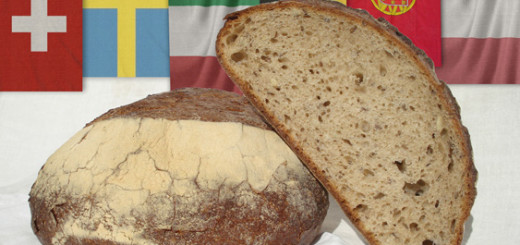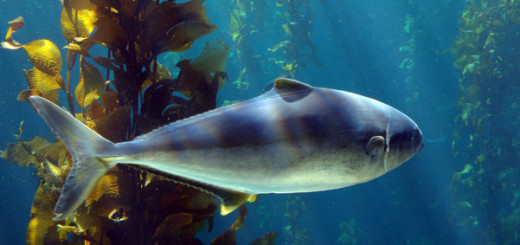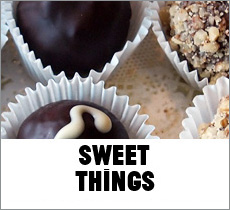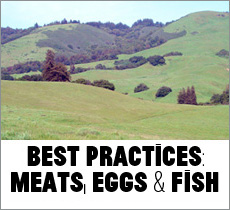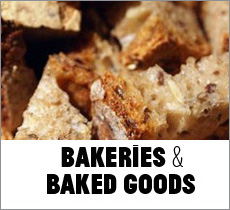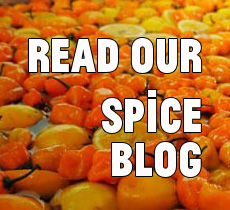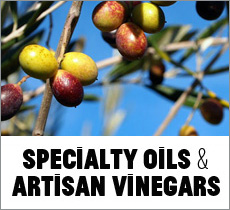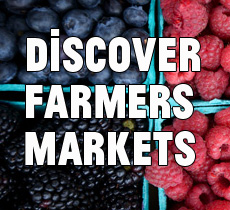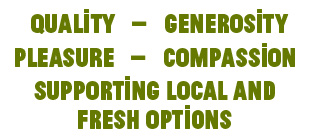The Annual Scion Exchange: California Rare Fruit Growers Association
Where can you trade fruit tree scion wood like baseball cards and learn how to graft from the pros? At the annual scion exchange during the February California Rare Fruit Growers Association (CRFG) meeting (Central Coast chapter), generally held at the Crops Unit at Cal Poly—San Luis Obispo. The CRFG helps individuals learn more about growing fruit at home in a variety of Central Coast microclimates.
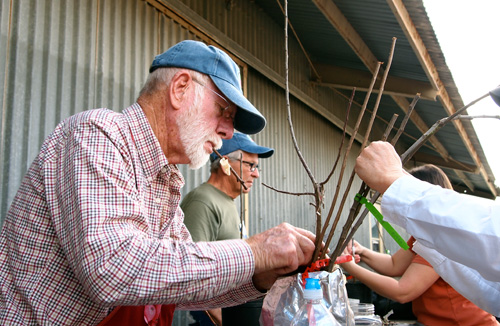
Marv Daniels loves the Cleft Graft; he’s also a good teacher
During the event, members and the general public can select specimens of unique scion wood for fruit trees (excluding citrus or close relatives of citrus to prevent the spread of Citrus Greening Disease). Inside the Crops Unit, labeled bags filled with scions cover the tables with the hopeful tips of fruit branches, ready for grafting. Outside, veteran CRFG leaders demonstrate a range of effective grafting strategies. Grafting: the home gardener’s super-power! [Scroll for slideshow; captions courtesy of Joe Sabol, CRFG]
[The following is taken from The Leaflet, the Central Coast CRFG’s newsletter.]
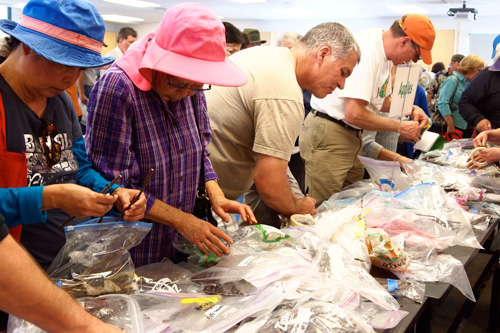
sifting through scions
The biggest yearly event for most CRFG chapters is the scion exchange. This is where we share not only our knowledge of plants that have edible seeds, fruit, leaves, stems or roots, we share the materials needed to grow them. This age-old ritual involves saving and exchanging scions—special fruit tree prunings used to propagate more fruit trees—then trading them like baseball cards, and finally grafting our new “players” onto our old trees or onto new rootstock, or in some cases rooting them directly into the soil.
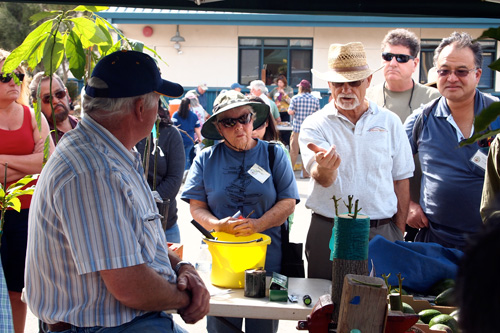
Craig Righetti (in stripes) fields avocado grafting questions
At this annual event, our chapter shares hundreds of varieties of fruit scions to graft onto your own trees. You may find apples, pears, quince, plums, peaches, nectarines, apricots, cherries, and others. Also, cuttings to root may include grapes, figs, pomegranate, kiwi fruit, mulberries, and more. Available for purchase are rootstocks and grafting supplies. There are grafting lessons and demonstrations for those ready to graft new varieties to their trees, and custom and assisted grafting of your selected varieties onto rootstock purchased at the exchange.
If you are new to the scion exchange, you will be most successful if you take just a little time to prepare:
1. Make a list of your favorite fruit varieties.
2. Talk to your neighbors to see what kinds of fruit produce well in your area.
3. Gather up three things to collect your bounty: some sealable plastic bags (gallon size is best), masking tape, and a permanent marker to label your loot.
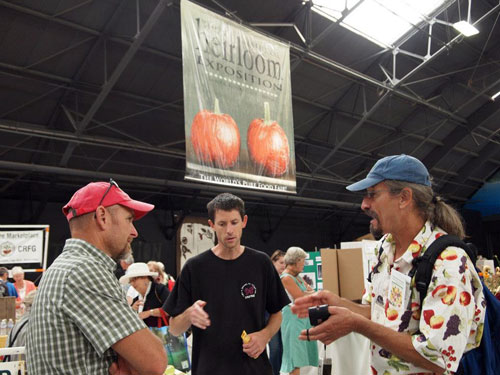
John Valenzuela discusses fruit trees with
Mr. Spice and our friend Dave at the National Heirloom Expo, September 2012 Santa Rosa
At the exchange, before collecting your scions, take the time to talk with some of the experienced grafters to learn about the factors to consider that are critical to the success of your fruit tree:
• Frost/Freeze
• Chill Hours
• Pollination
• Graft Compatibility
John Valenzuela, horticulturist, consultant, permaculture educator, and chair of the CRFG Golden Gate chapter, brings scion material from the Northern California scion exchanges: more info about the Golden Gate chapter’s scion exchange.
John writes on the Permaculture San Francisco blog:
This amazing diversity of propagation material of hundreds of fruit varieties comes mostly from four sources: The Heritage Fruit Orchard at Prusch Park in San Jose, taken care of by volunteers lead by the Santa Clara chapter CRFG and Santa Clara Chapter Master Gardeners; Andy’s Orchard in Morgan Hill, a commercial farm run by Andy Mariani; the restored orchard at Filoli, a property of the National Trust for Historic Preservation in Woodside; and lastly the USDA National Clonal Germplasm Repository for Fruit and Nut Crops at the Wolfskill Experimental Farm in Winters. According to rare fruit collector and fruit historian, C. Todd Kennedy, “Taken together, the four sources provide the largest and most varied offering of fruit propagating material available at any place in the world today—for fee or for free.”
The goal is to offer these unique varieties to the general fruit-loving public. The hope is that people are able to successfully choose, collect, keep well labeled, propagate, nurture to fruiting, and to eventually bring back scions to share with others at the Exchange. When home growers are able to return scions to the Exchange, it reduces the burden on the other sources of scion wood.
More info
- CRFG Central Coast chapter
- CRFG Golden Gate chapter
- National Heirloom Exposition, September in Santa Rosa
Content from The Leaflet reproduced with permission. Thanks Gary!

